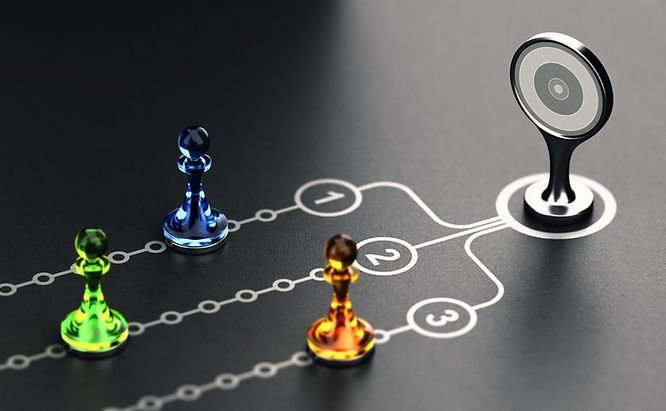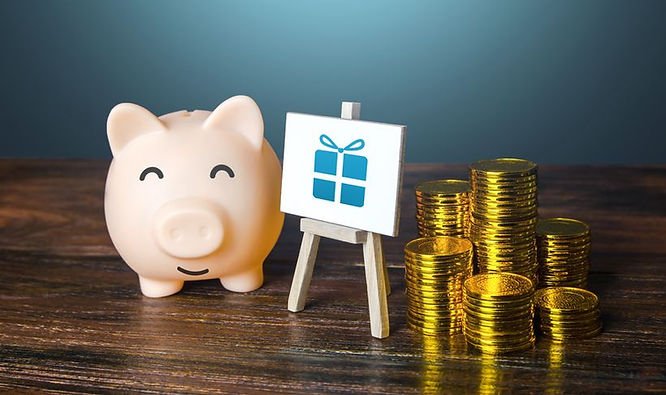In today’s highly competitive e-commerce landscape, retaining customers and encouraging repeat purchases are crucial for sustained growth and success. A well-designed loyalty program can be an effective tool to achieve this, as it rewards customers for their continued patronage and fosters long-term relationships. This guide will provide an in-depth explanation of how to create and implement a successful loyalty program for your e-commerce business, helping you to boost customer retention, increase sales, and enhance overall customer engagement.
Implementing a successful loyalty program for your e-commerce business involves careful planning, execution, and monitoring to ensure it is effective in retaining customers and driving sales.
10 Steps To Create And Implement A Loyalty Program:
- Set clear objectives: Define the primary goals for your loyalty program. These could include increasing customer retention, boosting sales, or enhancing customer engagement. Setting objectives will help you design a program that aligns with your business strategy and accurately measure its success.
- Research and understand your target audience: Analyze your customer base to understand their needs, preferences, and purchasing behavior. This will help you tailor your loyalty program to appeal to your target audience and encourage repeat purchases.
- Choose the right program structure: There are various types of loyalty programs, such as points-based, tiered, and VIP membership systems. Choose a structure that fits your business model, audience, and objectives. For example, a points-based program might be suitable for a business with a wide range of products, while a tiered system might work better for businesses with high-ticket items.
- Design a compelling rewards system: Offer rewards that are valuable, relevant, and achievable to motivate customers to participate in the program. Rewards could include discounts, free shipping, exclusive products, or early access to sales. Consider offering both short-term and long-term rewards to cater to different customer preferences.
- Create a seamless user experience: Integrate your loyalty program into your e-commerce platform to make it easy for customers to sign up, earn, and redeem rewards. Ensure that the process is smooth and intuitive, both on desktop and mobile devices.
- Promote your loyalty program: Use various marketing channels, such as email marketing, social media, and in-store displays, to raise awareness about your loyalty program. Promote it on your website’s homepage, in transactional emails, and during the checkout process to encourage customers to join.
- Monitor and analyze program performance: Regularly track key performance indicators (KPIs) like enrollment rate, customer retention rate, and average order value to gauge the success of your loyalty program. Analyze the data to identify areas for improvement and adjust the program as needed.
- Continuously optimize and update the program: As your business evolves, so should your loyalty program. Stay up-to-date with industry trends and customer preferences, and incorporate feedback from customers to make improvements. Periodically review and update the program structure, rewards, and promotional strategies to maintain its effectiveness.
- Communicate with your customers: Keep your customers informed about their rewards and program updates through email, push notifications, and in-app messaging. Encourage them to engage with the program by sharing their feedback and promoting exclusive offers.
- Leverage partnerships: Collaborate with other businesses to offer joint rewards or benefits, such as partner discounts or exclusive access to partner events. This can help increase the value of your loyalty program and attract new customers.
By following these steps, you can create a loyalty program that appeals to your customers, encourages repeat business, and ultimately, contributes to the growth of your e-commerce business.
Set Clear Objectives

Setting clear objectives is a crucial first step in creating a successful loyalty program for your e-commerce business. By defining the primary goals, you can ensure the program aligns with your overall business strategy and allows for accurate measurement of success. Some common objectives for loyalty programs include:
Increasing Customer Retention
A well-designed loyalty program incentivizes customers to make repeat purchases by rewarding their continued business. Higher customer retention rates can lead to increased revenue and long-term growth.
Boosting Sales
Offering rewards or incentives can encourage customers to spend more and make purchases more frequently. This can increase both average order value and overall sales volume, positively impacting your bottom line.
Enhancing Customer Engagement
An effective loyalty program fosters stronger relationships between your customers and your brand. By providing opportunities for interaction, such as earning and redeeming points or attending exclusive events, customer engagement can increase, contributing to higher satisfaction levels and brand loyalty.
Encouraging Brand Advocacy
By creating a positive customer experience and offering valuable rewards, a loyalty program can turn satisfied customers into brand advocates. These customers are more likely to recommend your business to friends and family, resulting in increased word-of-mouth marketing and new customer acquisition.
Differentiating Your Brand
A well-crafted loyalty program can set your business apart from competitors by providing unique value propositions and experiences for your customers. This differentiation can help establish your brand as a leader in your industry.
By defining these objectives, you can design a loyalty program that aligns with your business strategy and enables you to establish key performance indicators (KPIs) for accurately measuring its success. This information will be invaluable in making data-driven decisions for continuous improvement and maximizing the effectiveness of your loyalty program.
Research And Understand Your Target Audience

Researching and understanding your target audience is a vital step in creating an effective loyalty program for your e-commerce business. By analyzing your customer base, you can gain insights into their needs, preferences, and purchasing behavior, enabling you to design a program that resonates with them and encourages repeat purchases. Here are some steps to help you understand your target audience:
Collect Customer Data
Gather information about your customers through various sources, such as purchase history, customer profiles, surveys, and feedback forms. Collect demographic data (age, gender, location), psychographic data (interests, values, lifestyle), and behavioral data (purchase frequency, spending patterns).
Segment Your Audience
Divide your customer base into distinct groups based on shared characteristics, such as demographics, purchase behavior, or product preferences. This will help you identify your most valuable customer segments and tailor your loyalty program to their specific needs and expectations.
Create Customer Personas
Develop detailed personas representing your target audience by combining the data gathered from segmentation. Personas should include demographics, interests, motivations, and pain points. These personas will help you better understand your customers and design a program that appeals to them.
Analyze Customer Feedback
Regularly review customer feedback, ratings, and reviews to identify common themes and areas for improvement. This information can help you understand what aspects of your business are most important to your customers and ensure that your loyalty program addresses those needs.
Monitor Customer Behavior
Keep track of customer interactions with your e-commerce platform, such as browsing patterns, cart abandonment rates, and product preferences. This data can provide valuable insights into customer behavior and preferences, allowing you to tailor your loyalty program accordingly.
Conduct Competitor Analysis
Examine the loyalty programs offered by your competitors and identify the features and rewards that seem to be most effective in engaging their customers. This will help you understand what works well in your industry and inspire ideas for your program.
Test And Iterate
Launch your loyalty program with a small segment of your audience to gather feedback and gauge its effectiveness. Use this feedback to make adjustments and refinements before rolling it out to your entire customer base.
By understanding your target audience’s needs, preferences, and purchasing behavior, you can create a loyalty program that is more likely to resonate with them and encourage repeat business. This tailored approach will help maximize the return on investment (ROI) of your loyalty program and contribute to the long-term success of your e-commerce business.
Choose The Right Program Structure

Choosing the right program structure is crucial to the success of your loyalty program. The structure should align with your business model, target audience, and objectives. Here are some common types of loyalty programs and guidance on how to select the one that best suits your e-commerce business:
Points-Based System
In a points-based program, customers earn points for every purchase, and these points can be redeemed for rewards, such as discounts, free products, or special offers. This structure is suitable for businesses with a wide range of products and price points, as it encourages customers to make frequent purchases to accumulate points.
Considerations:
Ensure the points-to-reward conversion is simple and transparent.
Set expiration dates for points to encourage customers to redeem them within a certain timeframe.
Tiered System
In a tiered program, customers achieve different levels or tiers based on their spending or engagement with the brand. Each tier offers increasingly valuable rewards or benefits. This structure works well for businesses with high-ticket items or those looking to incentivize increased spending.
Considerations:
Make the tier thresholds and rewards clear and achievable.
Regularly review the performance of each tier and adjust the program as needed to maintain its effectiveness.
VIP Membership System
A VIP membership program offers exclusive benefits to customers who pay a subscription fee or meet specific spending requirements. This structure is ideal for businesses that can provide ongoing exclusive perks, such as free shipping, members-only sales, or priority customer service.
Considerations:
Communicate the value of the membership to justify the subscription fee.
Continuously offer exclusive perks to keep members engaged and retain their loyalty.
Cashback System
In a cashback program, customers earn a percentage of their purchase value as cashback, which can be redeemed as Communicating store credit or discounts on future purchases. This structure is suitable for businesses looking to incentivize repeat purchases and drive customer loyalty through monetary rewards.
Considerations:
Determine the cashback percentage based on your profit margins and competitive landscape.
Set clear rules and limitations for earning and redeeming cashback rewards.
Partner-Based System
A partner-based program involves collaborating with other businesses to offer joint rewards or benefits, such as partner discounts or exclusive access to partner events. This structure can help increase the value of your loyalty program, expand your customer base, and create opportunities for cross-promotions.
Considerations:
Choose partners that align with your brand values and appeal to your target audience.
Clearly define the partnership terms, responsibilities, and benefits for all parties involved.
When choosing the right loyalty program structure, consider your business model, target audience, and objectives. You may also want to experiment with a hybrid approach, combining elements from different program structures to create a unique and engaging experience for your customers. Regardless of the structure you choose, ensure that it is easy to understand, simple to use, and provides real value to your customers.
Design A Compelling Rewards System

Designing a compelling rewards system is essential for the success of your loyalty program. Your rewards should be valuable, relevant, and achievable to encourage customers to participate and stay engaged. Here are some guidelines to help you design an effective rewards system:
Understand Customer Preferences
Research your target audience to understand their preferences and tailor your rewards accordingly. Offer rewards that are desirable and relevant to your customers, such as popular products, services, or experiences.
Offer A Variety Of Rewards
Provide a diverse range of rewards to cater to different customer preferences and motivations. Some examples include:
Discounts or cashback on future purchases
Free shipping or expedited shipping
Exclusive products or limited-edition items
Early access to sales or new product launches
Gift cards or store credit
Invitations to exclusive events or experiences
Balance Short-Term And Long-Term Rewards
Offer a mix of short-term rewards (easily achievable and quickly redeemable) and long-term rewards (requiring more time or effort to attain) to cater to different customer preferences and maintain their interest. Short-term rewards can encourage immediate purchases, while long-term rewards can promote continued engagement and loyalty.
Set Achievable Goals
Ensure that the rewards are attainable within a reasonable timeframe and with a realistic amount of effort. Customers should feel motivated and challenged, but not discouraged by unattainable rewards.
Create A Tiered Rewards System (Optional)
If using a tiered loyalty program structure, design rewards that increase in value as customers progress through the tiers. This can incentivize customers to strive for higher tiers and increase their spending or engagement with your brand.
Personalize Rewards
Use customer data to offer personalized rewards based on individual preferences, purchase history, or other relevant factors. Personalized rewards can make customers feel valued and appreciated, leading to stronger loyalty and higher satisfaction.
Communicate The Value Of Rewards
Communicate the benefits and value of each reward to your customers. Make it easy for them to understand how to earn and redeem rewards, and ensure that the redemption process is simple and seamless.
Regularly Evaluate And Update Rewards
Monitor the performance of your rewards system and gather customer feedback to identify areas for improvement. Continuously update and optimize your rewards offering to maintain its relevance and effectiveness.
By designing a compelling rewards system that caters to your Communicatecustomer’s preferences and offers a mix of short-term and long-term rewards, you can motivate customers to participate in your loyalty program and foster long-lasting relationships with your brand.
Create A Seamless User Experience

Creating a seamless user experience is crucial for the success of your loyalty program. By integrating the program into your e-commerce platform and making it easy for customers to sign up, earn, and redeem rewards, you can increase customer engagement and satisfaction. Here are some guidelines to help you create a smooth and intuitive user experience for your loyalty program:
Easy Sign-Up Process
Make the registration process for your loyalty program simple. Offer multiple sign-up options, such as during account creation, at checkout, or via a dedicated loyalty program page. You can also consider social media sign-ups or using existing customer accounts to streamline the process.
Clear Program Information
Provide easily accessible information about your loyalty program, including its structure, rewards, and terms and conditions. Use clear language and concise explanations to help customers understand the program and its benefits.
Integrate With Your E-Commerce Platform
Seamlessly incorporate the loyalty program into your e-commerce platform, allowing customers to view their points or rewards balance, redeem rewards, and track their progress directly from their account dashboard or during the checkout process.
Mobile-Friendly Experience
Ensure that your loyalty program is optimized for mobile devices, as a growing number of customers shop and interact with brands through their smartphones. Create a responsive design that adapts to various screen sizes and offers a consistent user experience across devices.
Streamline Earning And Redemption
Make the process of earning and redeeming rewards as simple as possible. Automatically apply points or rewards to customers’ accounts when they make a purchase, and offer an intuitive redemption process at checkout or within their account dashboard.
Personalized Communications
Use personalized and targeted communications, such as email or push notifications, to keep customers informed about their loyalty program status, new rewards, and promotions. Segment your audience based on their engagement levels and preferences to send relevant and timely messages.
Offer Customer Support
Provide dedicated customer support for your loyalty program, addressing any questions, concerns, or issues that customers may have. Offer multiple support channels, such as live chat, email, or phone support, to make it easy for customers to get the help they need.
Continuously Optimize
Regularly review your loyalty program’s user experience and gather customer feedback to identify areas for improvement. Implement changes and optimizations to ensure the program remains user-friendly and appealing to your customers.
By creating a seamless and intuitive user experience for your loyalty program, you can encourage customers to engage with the program and increase their satisfaction with your brand. This can lead to higher customer retention rates, increased sales, and long-term business success.
Promote Your Loyalty Program

Promoting your loyalty program effectively is essential to raising awareness and encouraging customers to join. Utilizing various marketing channels can help you reach a wider audience and maximize the impact of your loyalty program. Here are some strategies to promote your loyalty program:
Website Promotion
Feature your loyalty program prominently on your website’s homepage or create a dedicated landing page to provide detailed information about the program. Include a clear call-to-action (CTA) encouraging customers to sign up.
Email Marketing
Use email marketing to inform your existing customer base about your loyalty program. Send targeted emails highlighting the benefits of the program and encourage them to sign up. Incorporate loyalty program reminders and updates in your regular email newsletters.
Social Media
Leverage your social media channels to promote your loyalty program. Create engaging posts showcasing the program’s benefits, customer success stories, or special promotions for members. Use targeted social media ads to reach potential customers who may be interested in your program.
Transactional Emails
Include information about your loyalty program in transactional emails, such as order confirmations, shipping notifications, and abandoned cart reminders. This can help raise awareness among customers who may not be aware of the program.
Checkout Process
Promote your loyalty program during the checkout process by displaying a banner, pop-up, or checkbox allowing customers to sign up before completing their purchase. This can help capture customers who may not have noticed the program earlier in their shopping journey.
In-Store Displays (If Applicable)
If you have a brick-and-mortar presence, use in-store displays, signage, or staff interactions to promote your loyalty program to customers. This can help create a cohesive brand experience and encourage customers to join the program both online and offline.
Content Marketing
Incorporate information about your loyalty program into your blog posts, articles, or videos. Create content that showcases the benefits of the program or provides tips on how to make the most of the rewards.
Influencer Marketing
Partner with influencers in your industry to promote your loyalty program to their audience. This can help increase brand awareness and attract new customers to your program.
Referral Program
Encourage your existing loyalty program members to refer friends and family by offering incentives, such as bonus points or exclusive rewards. This can help grow your customer base and increase program engagement.
Seasonal Promotions
Leverage seasonal events or holidays to promote your loyalty program with special offers, limited-time rewards, or themed marketing campaigns.
By using a combination of marketing channels and promotional strategies, you can effectively raise awareness about your loyalty program and encourage more customers to join. This, in turn, can help you achieve your loyalty program objectives, such as increasing customer retention, boosting sales, and enhancing customer engagement.
Monitor And Analyze Program Performance

Monitoring and analyzing your loyalty program’s performance is crucial for ensuring its ongoing success and making necessary adjustments. By tracking key performance indicators (KPIs) and analyzing the data, you can identify areas for improvement and optimize your program. Here are some steps to help you monitor and analyze your loyalty program’s performance:
Define your KPIs
Determine the most relevant KPIs for your loyalty program based on your objectives. Some common KPIs include:
Enrollment Rate
The number of customers who sign up for your loyalty program.
Customer Retention Rate
The percentage of customers who make repeat purchases within a specific period.
Average Order Value (AOV)
The average amount customers spend per order.
Redemption Rate
The percentage of earned rewards that are redeemed by customers.
Customer Lifetime Value (CLV)
The total revenue generated by a customer during their relationship with your brand.
Set Up Tracking And Reporting Tools
Use analytics tools and software to track your KPIs and generate reports. Some popular tools include Google Analytics, Adobe Analytics, and specialized loyalty program analytics platforms. Ensure your chosen tools integrate with your e-commerce platform and loyalty program software.
Establish Benchmarks
Set baseline values for your KPIs based on historical data or industry standards. These benchmarks will help you gauge the success of your loyalty program and identify areas where it may be underperforming.
Regularly Review Performance
Schedule periodic reviews of your loyalty program’s performance, such as monthly or quarterly. Compare your KPIs to your benchmarks and track changes over time to identify trends or patterns.
Analyze Customer Data
Dive deeper into your customer data to understand customer behavior and preferences. This can help you identify factors that may be impacting your loyalty program’s performance, such as specific rewards, tiers, or promotions.
Conduct A/B Testing
Test different variations of your loyalty program’s features or rewards to determine which simply performs best. For example, you could test different reward structures, redemption options, or promotional offers. Use the insights gained from A/B testing to refine and optimize your program.
Gather Customer Feedback
Collect feedback from your customers about their experience with your loyalty program, either through surveys, reviews, or direct interactions. Use this feedback to identify areas for improvement and enhance your program’s appeal to your target audience.
Implement Changes And Optimizations
Based on your analysis, make data-driven adjustments to your loyalty program to address areas for improvement. Continuously optimize and refine your program to ensure it remains effective and engaging for your customers.
By regularly monitoring and analyzing your loyalty program’s performance, you can identify areas for improvement and make data-driven adjustments to enhance its effectiveness. This ongoing process of optimization will help you achieve your loyalty program objectives and contribute to your e-commerce business’s long-term success.
Continuously Optimize And Update The Program

Continuously optimizing and updating your loyalty program is essential to maintaining its effectiveness and staying relevant to your customers. As your business evolves and market trends change, your loyalty program should adapt to keep up with industry developments and customer preferences. Here are some tips to help you continuously optimize and update your loyalty program:
Stay Informed About Industry Trends
Keep up-to-date with loyalty program trends and best practices within your industry. Attend conferences, read industry publications, and follow relevant thought leaders to gather insights and ideas for improving your program.
Monitor Customer Preferences
Regularly analyze customer data and behavior to identify shifts in preferences, needs, or expectations. Use these insights to inform updates or adjustments to your loyalty program.
Gather Customer Feedback
Collect and analyze feedback from your customers to understand their satisfaction with your loyalty program and identify areas for improvement. Implement changes based on customer feedback to enhance the program’s appeal and effectiveness.
Regularly Review Program Performance
As mentioned in the previous answer, monitor key performance indicators (KPIs) to evaluate your loyalty program’s success. Use this data to identify areas for improvement and make data-driven adjustments.
Test And Iterate
Conduct A/B tests to compare different aspects of your loyalty program, such as reward structures, promotional strategies, or user experience. Use the results to inform updates and optimizations to your program.
Update Rewards And Incentives
Periodically review your rewards and incentives to ensure they remain relevant, valuable, and appealing to your customers. Update your rewards offering based on customer preferences, business objectives, and industry trends.
Optimize User Experience
Continuously improve the user experience of your loyalty program by making it more intuitive, user-friendly, and engaging. Implement updates to the program’s design, navigation, or functionality based on user feedback and best practices.
Evaluate Program Structure
Periodically assess your loyalty program’s structure to ensure it remains aligned with your business objectives and customer preferences. Consider updating the program’s structure, tiers, or earning mechanisms as needed to maintain its effectiveness.
Refine Promotional Strategies
Regularly review and update your promotional strategies to maximize the reach and impact of your loyalty program. Experiment with different marketing channels, messaging, and targeting to identify the most effective approaches for promoting your program.
Be Open To Change
Stay flexible and open to change, recognizing that your loyalty program may need to evolve. Continuously assess your program’s effectiveness and be willing to make significant changes or updates if necessary to maintain its success.
By continuously optimizing and updating your loyalty program, you can ensure it remains effective, engaging, and relevant to your customers. This ongoing process of improvement will contribute to the long-term success of your e-commerce business and help you achieve your loyalty program objectives.
Communicate With Your Customers

Effective communication with your customers is essential to maintaining engagement with your loyalty program and ensuring its success. By keeping customers informed about their rewards, program updates, and exclusive offers, you can encourage them to participate actively in the program and strengthen their relationship with your brand. Here are some strategies for effectively communicating with your customers about your loyalty program:
Personalized Emails
Send targeted and personalized emails to your customers, informing them of their rewards balance, program updates, and special promotions. Tailor the content based on their engagement level, preferences, and purchasing history to make the communication more relevant and engaging.
Push Notifications
Use push notifications on your mobile app or website to inform customers of real-time updates, such as newly earned rewards, upcoming promotions, or limited-time offers. Push notifications can help keep your loyalty program top-of-mind and encourage customers to engage with it more frequently.
In-App Messaging
If you have a mobile app, utilize in-app messaging to communicate with customers about their loyalty program status, rewards, and exclusive offers. In-app messaging can help create a more seamless and integrated experience for customers, making it easier for them to stay informed and engaged with your program.
Social Media
Leverage your social media channels to share updates about your loyalty program, highlight customer success stories, and promote exclusive offers for members. Engaging with customers on social media can help strengthen your brand community and encourage customers to share their experiences with your loyalty program.
Website Updates
Keep your loyalty program information up-to-date on your website, ensuring customers have access to the latest program details, rewards, and terms and conditions. Provide a dedicated loyalty program page or FAQ section to address common questions and help customers easily find the information they need.
Exclusive Offers
Encourage customer engagement by regularly promoting exclusive offers, promotions, or events for loyalty program members. Communicate these offers through various channels, such as email, social media, or in-app messaging, to maximize their reach and impact.
Customer Feedback
Actively solicit customer feedback about your loyalty program through surveys, reviews, or direct interactions. Respond to customer inquiries and concerns promptly and incorporate their feedback into your program updates and improvements.
Transactional Communications
Include loyalty program information and updates in transactional communications, such as order confirmations, shipping notifications, or customer service interactions. This can help reinforce the benefits of the program and encourage customers to engage with it.
Content Marketing
Incorporate information about your loyalty program into your content marketing efforts, such as blog posts, articles, or videos. Create content that showcases the benefits of the program, highlights customer success stories, or provides tips on how to make the most of the rewards.
Celebrate Milestones
Recognize and celebrate customer milestones, such as reaching a new tier, earning a significant reward, or celebrating their loyalty program anniversary. Send personalized messages or offer exclusive rewards to make customers feel valued and appreciated.
By effectively communicating with your customers about your loyalty program, you can encourage them to actively engage with the program, share their feedback, and build a stronger connection with your brand. This can ultimately contribute to the success of your loyalty program and help you achieve your business objectives.
Leverage Partnerships

Leveraging partnerships is a powerful strategy to enhance the value of your loyalty program and attract new customers. By collaborating with other businesses to offer joint rewards or benefits, you can expand your reward offerings and provide unique experiences for your customers. Here are some tips on how to leverage partnerships for your loyalty program:
Identify Potential Partners
Look for businesses that share a similar target audience, have complementary products or services, and align with your brand values. Potential partners could include suppliers, local businesses, or even non-competing online retailers.
Establish Mutual Benefits
Ensure that the partnership benefits both parties by providing value to each other’s customer base, increasing brand exposure, or generating additional revenue.
Develop Joint Rewards Or Benefits
Work with your partners to develop unique rewards or benefits that appeal to your shared customer base. Examples of joint rewards could include:
Partner discounts
Offer exclusive discounts on partner products or services to your loyalty program members.
Bonus points or rewards
Allow customers to earn bonus points or rewards when they purchase products or services from your partners.
Exclusive access
Provide your loyalty program members with exclusive access to partner events, workshops, or experiences.
Cross-promotions
Promote each other’s loyalty programs, products, or services to your respective customer bases.
Integrate Partner Rewards Into Your Program
Seamlessly incorporate partner rewards into your loyalty program structure, making it easy for customers to earn and redeem these rewards. Ensure that the process is user-friendly and communicate the terms and conditions associated with partner rewards.
Promote Your Partnerships
Use various marketing channels, such as email, social media, and content marketing, to promote your partnerships and joint rewards. Highlight the benefits of these partnerships and showcase success stories or testimonials from customers who have enjoyed the joint rewards.
Monitor Partnership Performance
Track key performance indicators (KPIs) related to your partnerships, such as customer engagement, redemption rates, and new customer acquisition. Analyze the data to evaluate the effectiveness of your partnerships and identify areas for improvement.
Maintain Partner Relationships
Regularly communicate with your partners to discuss the performance of your joint rewards, share feedback, and explore opportunities for growth or improvement. Nurture these relationships to ensure the long-term success of your partnerships.
Continuously Explore New Partnerships
Keep an eye out for new partnership opportunities to expand your loyalty program’s value and appeal. Stay informed about industry trends and competitor partnerships to identify potential collaboration opportunities.
By leveraging partnerships, you can enhance the value of your loyalty program, attract new customers, and provide unique experiences for your members. Collaborating with other businesses can help you stand out in the competitive e-commerce landscape and contribute to the success of your loyalty program and overall business.
In conclusion, a successful loyalty program can be a game-changer for your e-commerce business, setting you apart from the competition and fostering customer loyalty. By carefully planning, executing, and monitoring your program, you can create a customized and engaging experience that resonates with your target audience. Remember to continuously optimize and update your loyalty program to keep it relevant and effective, ensuring that it remains a valuable asset in your marketing arsenal. By following these guidelines, you’ll be well on your way to building a thriving e-commerce business with a loyal and satisfied customer base. You can join our coaching program for more tips and strategies in e-commerce.

